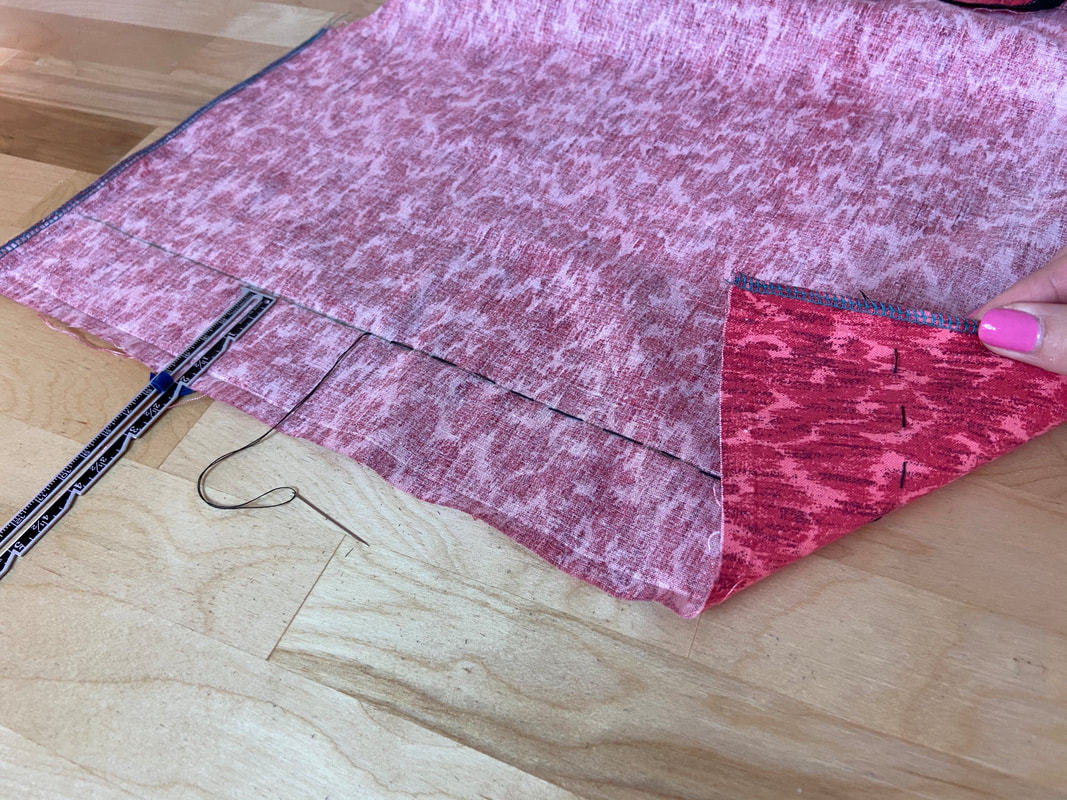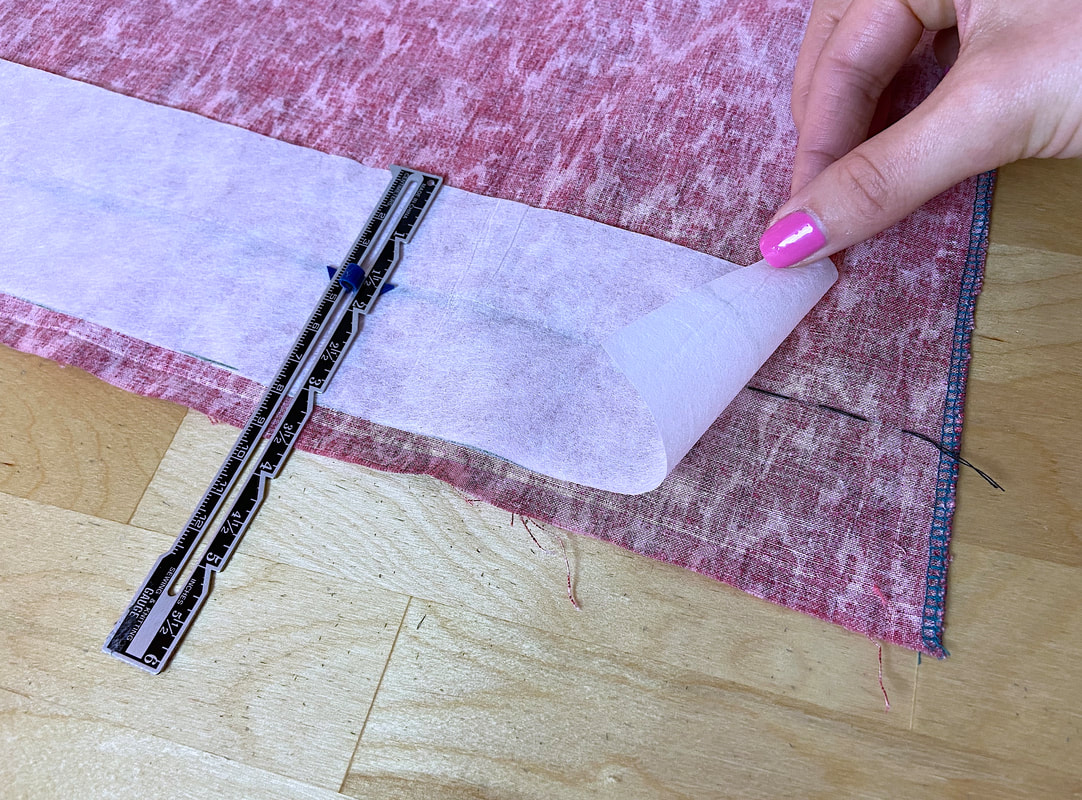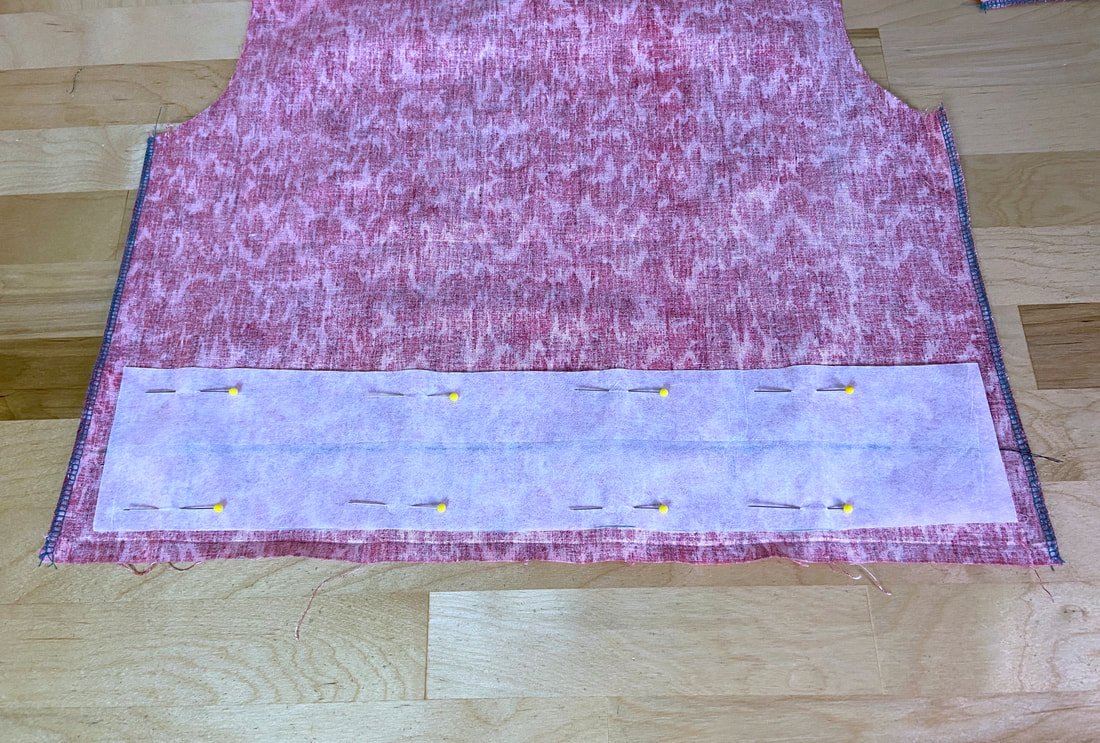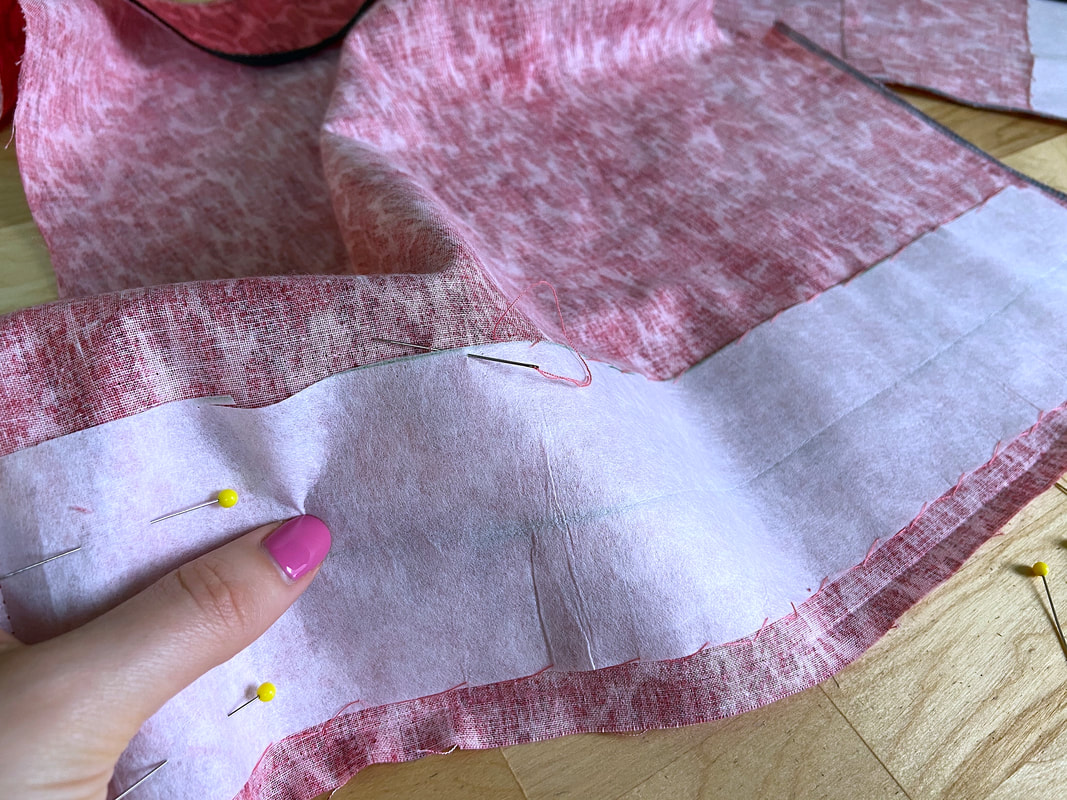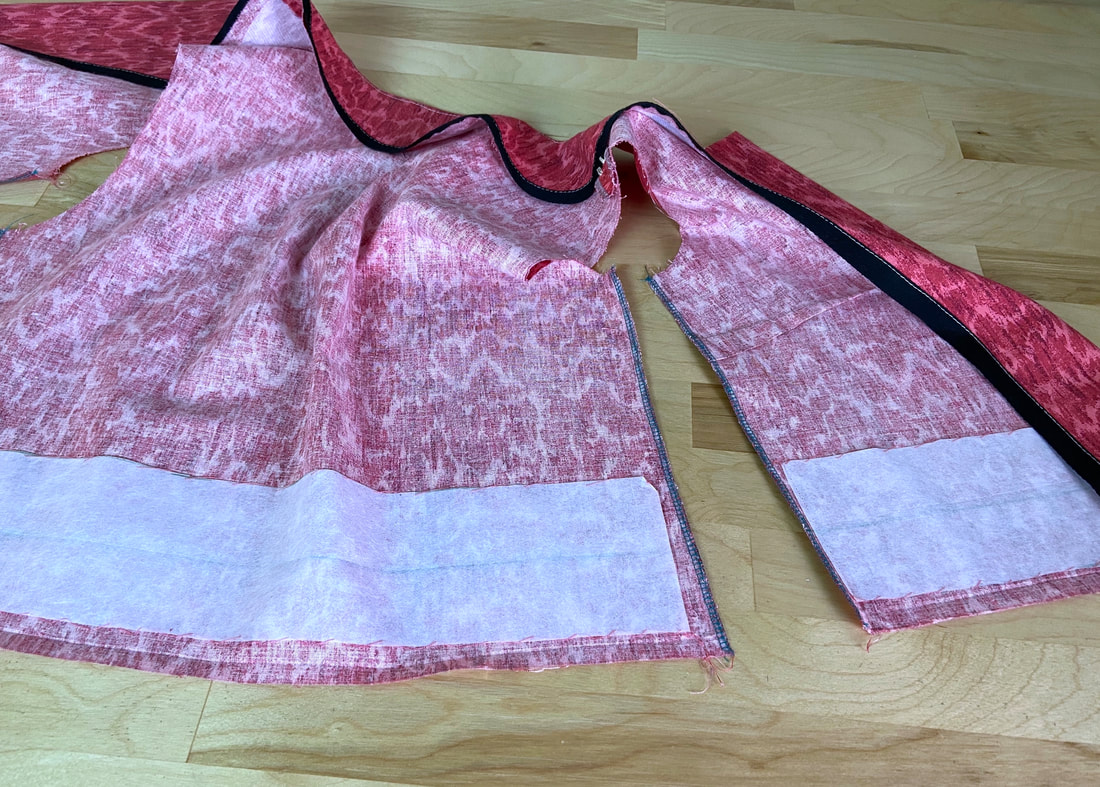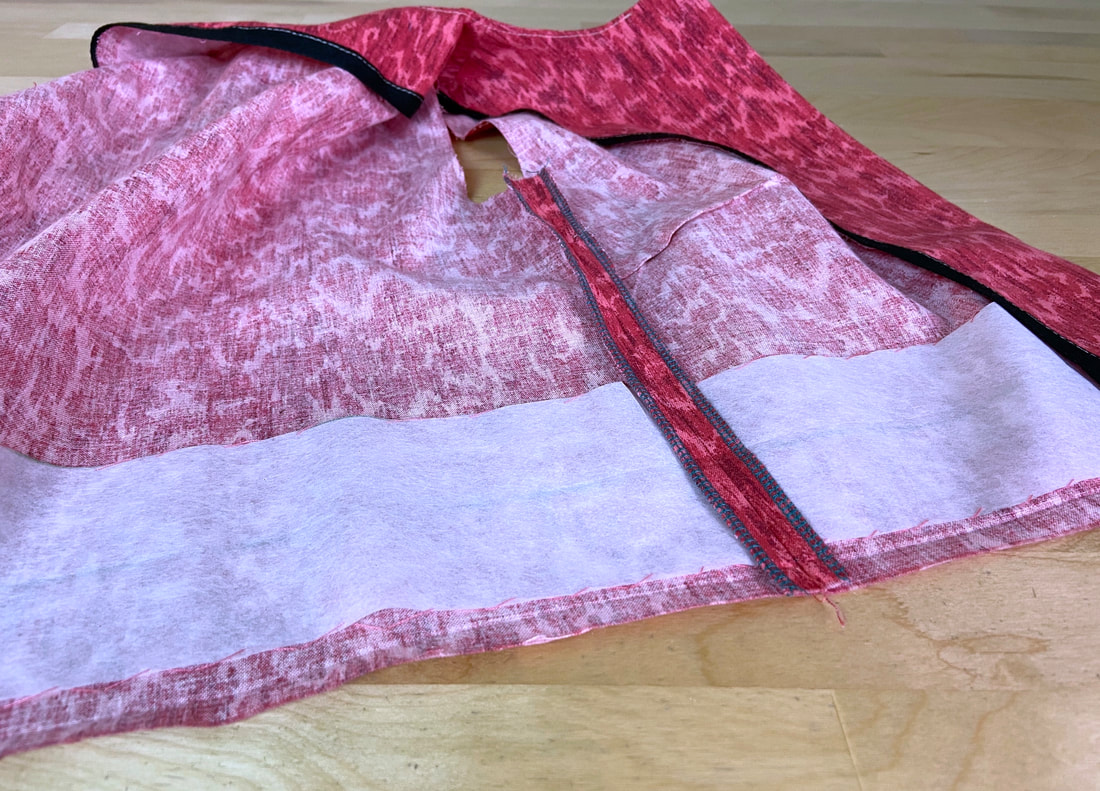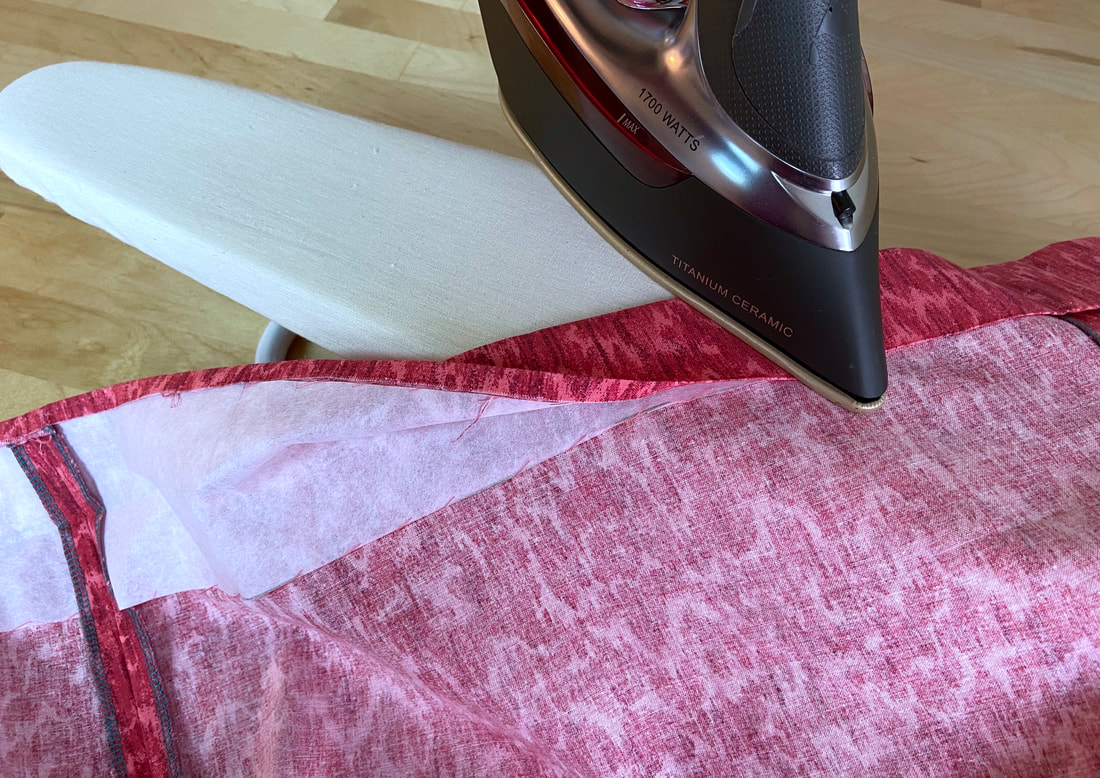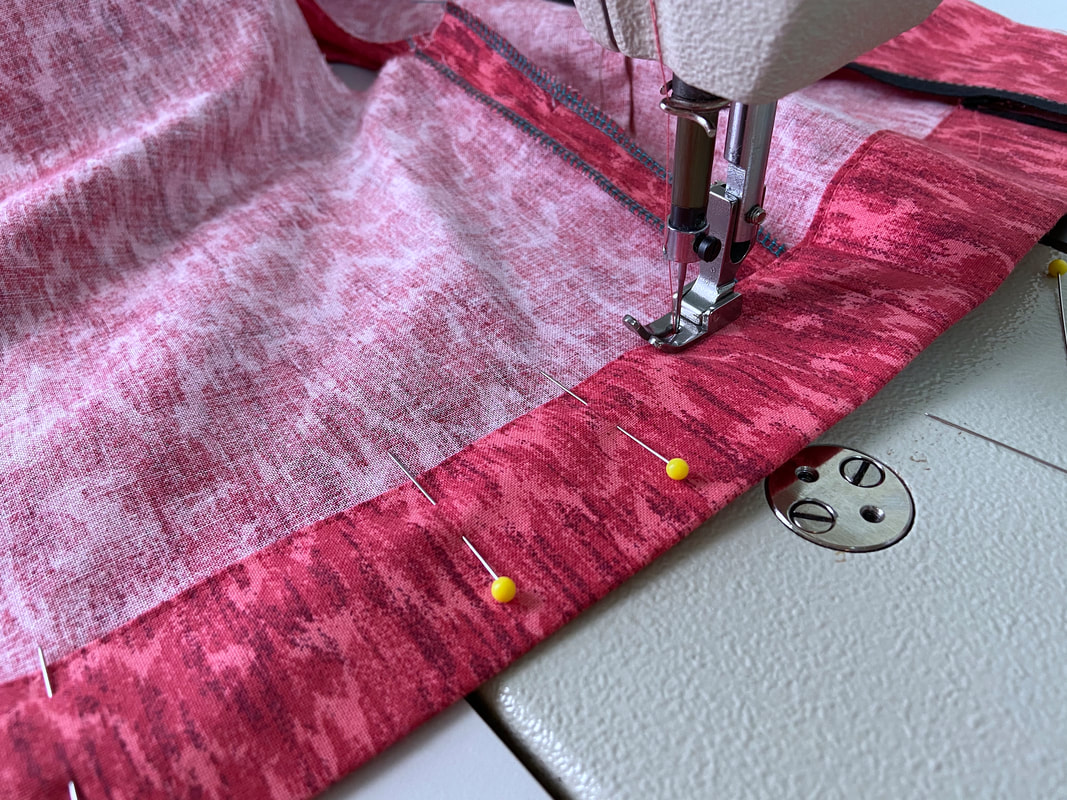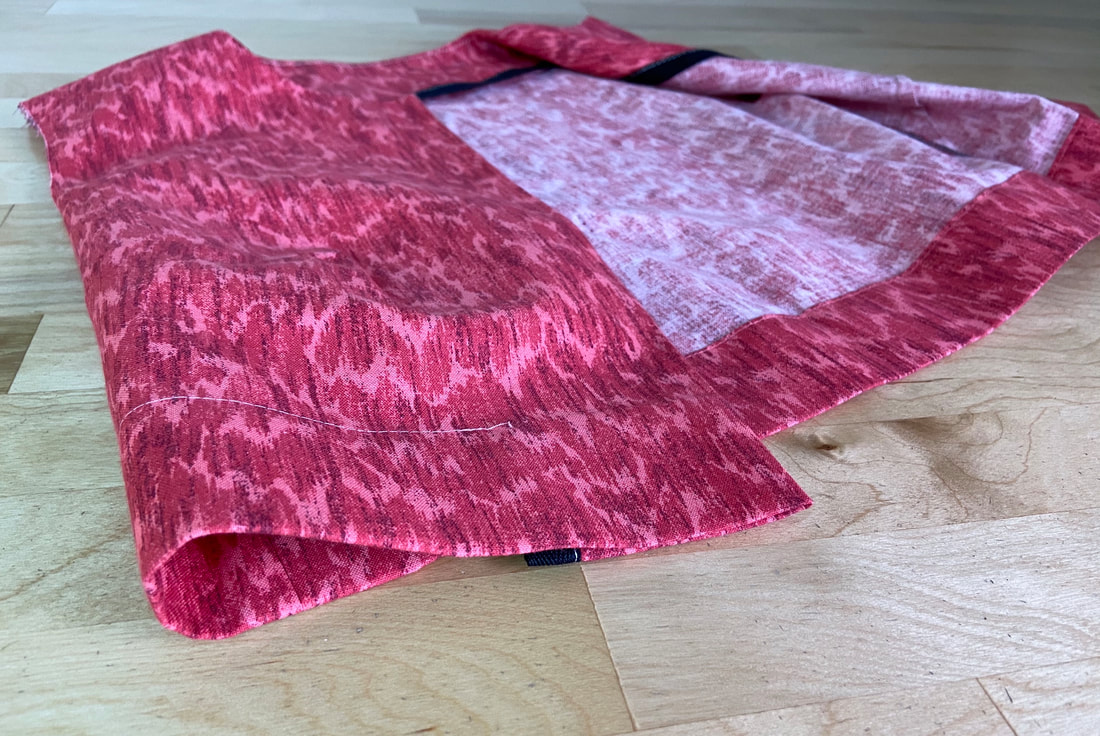How To Interface A Garment's Hem With Sew-On Interfacing
While traditional fusible interfacing is much easier to attach, some fabrics are heat sensitive and cannot be ironed in the fusing process. In these more rare cases, sew-on interfacing should be used.
Attaching sew-on interfacing is a bit more time consuming as it requires some hand stitching. However, the alignment and stitching process is fairly straight forward if you follow some of these simple steps:
Note: in this tutorial, the garment is unlined.
Attaching sew-on interfacing is a bit more time consuming as it requires some hand stitching. However, the alignment and stitching process is fairly straight forward if you follow some of these simple steps:
Note: in this tutorial, the garment is unlined.
1. Start by transferring the hemline to the wrong side of the garment layers. You can use tailor's chalk or a hand basting stitch as shown above.
The hand basting is useful when working with decorative or specialty fabrics that are difficult to mark on directly using traditional means like tailor's chalk or a quilting pencil.
The hand basting is useful when working with decorative or specialty fabrics that are difficult to mark on directly using traditional means like tailor's chalk or a quilting pencil.
2. Cut your interfacing strips at 1” wider than the hem allowance width. In this case, the hem allowance is 2” so the interfacing strip will be 3” wide.
Align the interfacing strip to the wrong side of the garment such that the strip's center aligns with the marked hemline (as pictured above). Use a ruler or gage pointer to ensure an accurate alignment.
Align the interfacing strip to the wrong side of the garment such that the strip's center aligns with the marked hemline (as pictured above). Use a ruler or gage pointer to ensure an accurate alignment.
Align the entire interfacing strip as described above and insert pins to secure the two layers together.
3. To attach the sew-on interfacing, use a blind hemming stitch to connect each of the strip's lengthwise edges to the wrong side of the garment.
To apply a hemming stitch, insert a stitch through the interfacing edge then back through the garment layer, catching only about 1-2 threads. As a result, there should be no visible stitching on the face of the garment.
To apply a hemming stitch, insert a stitch through the interfacing edge then back through the garment layer, catching only about 1-2 threads. As a result, there should be no visible stitching on the face of the garment.
Interfacing should be attached to each garment portion individually prior to stitching and finishing the seams that intersect the hem. Following this consecutive process will not only make it easier to measure and cut the required interfacing pieces, it will also aid incorrectly aligning and hand stitching them in place .
Once the interfacing is fully attached and all seams are stitched and finished, fold the hem allowance up and iron the fold to create the finished hemline. The interfacing should be fully encased by the hem allowance. In this case, the hem allowance is double folded to encase all raw edges.
Apply the technique of your choice to complete the hem's folded edge. In this example, the hem allowance is sealed with a topstitch.
The finished hem should be structured yet still flexible enough to work with the garment’s movement. No interfacing should be visible on either side of the garment- it should be fully enclosed on the inside of the hem allowance fold.

